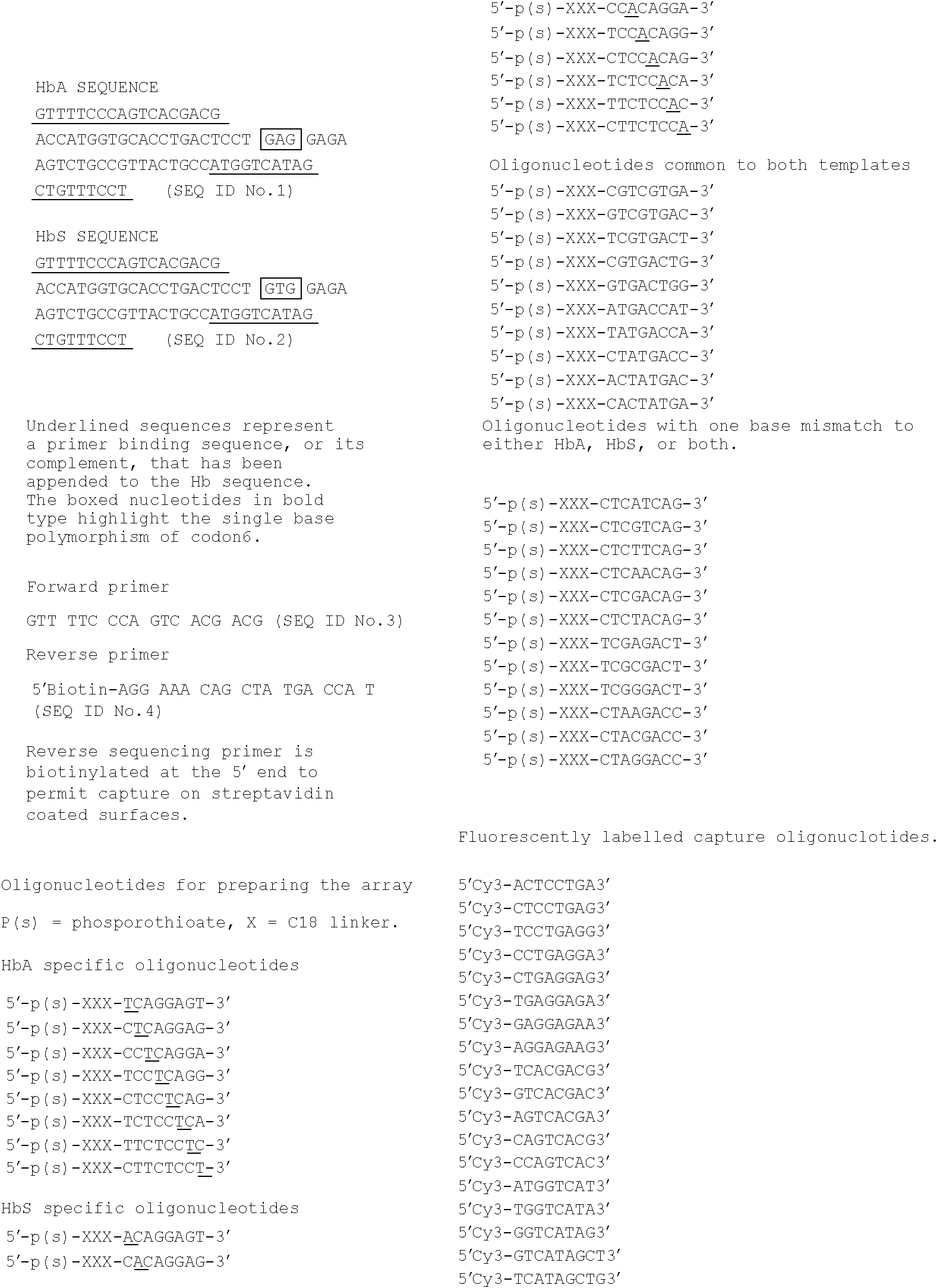Sequencing by hybridization
a technology of nucleic acids and hybridization, applied in the field of sequencing of nucleic acids by hybridization, can solve the problems of difficult to achieve reliable and uniform cutting, and achieve the effect of improving the quality of the produ
- Summary
- Abstract
- Description
- Claims
- Application Information
AI Technical Summary
Benefits of technology
Problems solved by technology
Method used
Image
Examples
Embodiment Construction
Step 1
All oligonucleotides were synthesised by MWG Biotech Ltd, Milton Keynes, UK).
The two target sequences comprise 45 bases spanning the human HbA and HbS beta globin gene sequences respectively. These two sequences differ at a single base positon resulting in a change in codon 6 from GAG to GTG. The resulting amino acid substitution from Glu to Val in the beta globin gene is responsible for sickle cell disease. Octamer oligonucleotides corresponding to the region immediately surrounding the mutation, sequences shared by both the HbA and HbS, and sequences mismatched by one base to one or both templates were synthesised with a terminal phosphorothioate, attached to the oligonucleotide via a (C.sub.18).sub.3 linker, for spotting in an array. Octamers complementary to HbA (Cy3 labelled) and HbS (Cy5 labelled) were synthesised for the solution hybridisation. The sequences are set out below.
Step 2
Synthetic template (0.1 uM HbS or HbA) was subjected to a polymerase chain reaction (PCR)...
PUM
| Property | Measurement | Unit |
|---|---|---|
| total volume | aaaaa | aaaaa |
| volume | aaaaa | aaaaa |
| volume | aaaaa | aaaaa |
Abstract
Description
Claims
Application Information
 Login to View More
Login to View More - R&D
- Intellectual Property
- Life Sciences
- Materials
- Tech Scout
- Unparalleled Data Quality
- Higher Quality Content
- 60% Fewer Hallucinations
Browse by: Latest US Patents, China's latest patents, Technical Efficacy Thesaurus, Application Domain, Technology Topic, Popular Technical Reports.
© 2025 PatSnap. All rights reserved.Legal|Privacy policy|Modern Slavery Act Transparency Statement|Sitemap|About US| Contact US: help@patsnap.com

